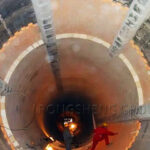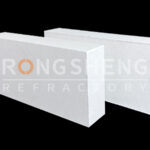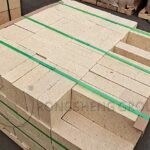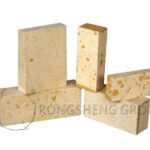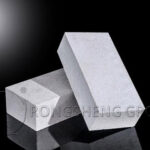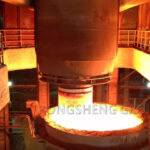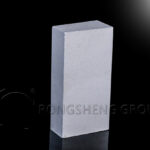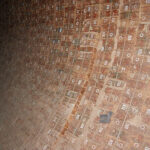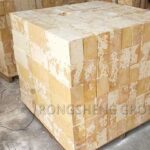Alumina lining bricks for ball mills. Alumina bricks. Wear-resistant alumina lining bricks, as wear-resistant linings for ball mills, feature high hardness, high density, low wear, good regularity, and corrosion resistance. They are widely used in industries such as ceramics, cement, paints, pigments, chemicals, coatings, and inorganic mineral powders. They can improve grinding efficiency, reduce grinding costs, and minimize product contamination.
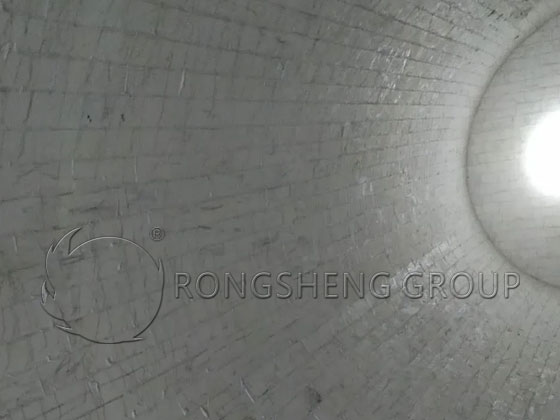
Ball Mill Wear-Resistant Lining Brick Installation Steps
- Ball Mill Preparation: Clean all brick or cement residue, welding slag, rust, and oil stains from the inner surface of the ball mill. Roughen smooth surfaces to improve bonding.
- Brick installation begins at the end face of the ball mill. Use straight bricks and straight half bricks throughout the end face, with the working surface of all lining bricks facing inward. Secure the mounting slots, with the upper brick layer overlapping and pressing firmly against the joint between the lower two bricks. Ensure staggered installation of the upper and lower rows of bricks. After installing each brick, gently tap with a rubber or wooden hammer to evenly distribute the adhesive between the bricks and between the bricks and the drum wall to ensure a high-quality bond. Strictly control the gap between bricks to less than 1.5mm.
- After installing both ends, begin installing the drum. According to the calculation of the number of straight and diagonal rows of bricks used in the cylinder lining brick count, install them alternately in proportion to the number of straight and diagonal rows calculated in step 2 to ensure the bottoms of the lining bricks rest firmly against the cylinder’s inner wall. The inner diameter of the lining bricks should be smoothly connected after installation. Each row of straight or diagonal bricks should be of the same specification along the length. Use half bricks at the ends to adjust the gaps between the bricks, ensuring that the gaps between adjacent rows are staggered. If straight bricks cannot fit into the last row, install thinner bricks and seal the gaps with cement.
Precautions for Ball Mill Alumina Wear-Resistant Lining Bricks
- If adhesive is used for bonding, the ball mill and the ambient temperature should not be too low, preferably above 20°C. This ensures the fluidity of the adhesive and maximizes its effectiveness.
- When brushing, it is strictly forbidden to add only a small amount of balls and water and then run the mill for extended periods. This will seriously damage the mill, lining bricks, and balls.
- If possible, install the ball mill on-site; avoid having it installed at the manufacturer’s location. This is to prevent impacts during lifting and transportation, which can cause the lining bricks to fall off at the impacted areas.
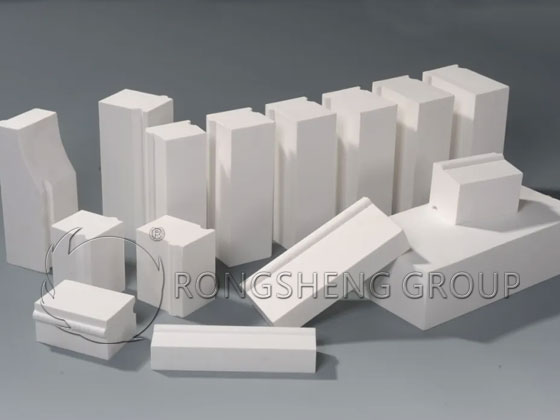
Wear-Resistant Alumina Lining Bricks
Wear-resistant alumina lining bricks are categorized by shape: rectangular, trapezoidal, and special-shaped. These bricks offer high hardness, density, low wear, excellent regularity, and corrosion resistance. They are used as wear-resistant linings in ball mills and are widely used in industries such as ceramics, cement, paint, pigments, chemicals, pharmaceuticals, and coatings. They effectively improve grinding efficiency, reduce grinding costs, and minimize product contamination.
Alumina Lining Brick Specifications
92% and 75% Al2O3 Alumina Lining Brick Specifications (mm)
Straight Brick, Inclined Brick, Thin Brick, Straight Half Brick, Inclined Half Brick
Length: 155, 152, 152, 75, 75
Width: 50, 50, 45, 30, 50, 50/45
Height: 70/60/40, 70/60/40, 70/60/40, 70/60/40, 70/60/40
Note: Inclined brick width of 50/45mm means the upper surface width is 45mm and the lower surface width is 50mm.
Specifications of 65% Al2O3 lining bricks (mm)
Model Length Width Height
Straight brick 150 50 68
Slanted brick 150 58/50 68
Note:
(1) Half bricks with lengths of 75mm and 18.75mm can be provided.
(2) Slanted brick width 58/50mm means the upper surface width is 50mm and the lower surface width is 50mm.

